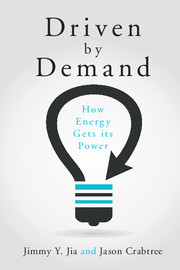Book contents
- Frontmatter
- Dedication
- contents
- List of figures
- List of tables
- Acknowledgments
- Part I Introduction
- Part II Three frameworks
- Part III Critical decisions
- 5 The International Niagara Commission of 1891
- 6 Trash as treasure
- 7 Paying for pavement
- 8 Heat without the hot air
- 9 The collision of two critical infrastructures
- Part IV Energy futurism
- Part V Societal advancement
- References
- Index
5 - The International Niagara Commission of 1891
from Part III - Critical decisions
Published online by Cambridge University Press: 05 June 2015
- Frontmatter
- Dedication
- contents
- List of figures
- List of tables
- Acknowledgments
- Part I Introduction
- Part II Three frameworks
- Part III Critical decisions
- 5 The International Niagara Commission of 1891
- 6 Trash as treasure
- 7 Paying for pavement
- 8 Heat without the hot air
- 9 The collision of two critical infrastructures
- Part IV Energy futurism
- Part V Societal advancement
- References
- Index
Summary
Whether electricity is ultimately destined to supersede shafting, pulleys and other gear now commonly used for transmission of energy over short distances is a question which only enthusiasts or those imperfectly acquainted with the technical parts of the subject can be bold enough to answer.
Gisbert Kapp (1886)In 1891, Edward Dean Adams, President of the Cataract Construction Company, convened a team of experts to pick the best way to harness the mechanical energy of the Niagara River for industrial use. Dubbed the International Niagara Commission, they were to announce the winner of an engineering competition to generate and transmit power from Niagara Falls to Buffalo, New York. The challenges were immense—no one had ever achieved commercial-scale power transmission over such a great distance. Three previous companies had already gone bankrupt attempting this feat. As a well-respected engineer, financier, and scientist, Adams was well suited to overcome these challenges.
Edward Dean Adams, at age 44, already had an illustrious career. Born in Boston in 1846, he graduated from Norwich University with a bachelor's of science. He became a student of the second incoming class at the Massachusetts Institute of Technology. While in school, he worked as a bookkeeper for T.J. Lee & Hill Stock Brokers and eventually became a partner at the exclusive Winslow, Lanier & Company in New York City (Jonnes, 2003). With a strong engineering and finance background, he made a name for himself in reorganizing bankrupted railroads (Carlson, 2006). He was a soft-spoken and well respected investment banker and a right-hand man of J. P. Morgan.
The US was at the tail end of the Gilded Age. The country was experiencing an enormous industrial and economic boom. New power-intensive industries, such as metallic ore refinement, were just beginning to launch. Despite being violently cyclical, railroad development flourished and barons such as John D. Rockefeller, Andrew Carnegie, Jay Gould, and J. P. Morgan were approaching the zenith of power and wealth (Morris, 2005).
- Type
- Chapter
- Information
- Driven by DemandHow Energy Gets its Power, pp. 93 - 108Publisher: Cambridge University PressPrint publication year: 2015

